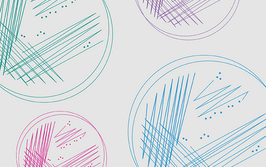Back to the Black Death
Forensic genomic research opens the door to further discoveries on human genetic history surrounding the Black Death pandemic
Jessica Allerton | | News

A worldwide collaborative research study has started to unveil the hidden genetic effects from one of the most fatal pandemics in history (1).
Focusing on Cambridgeshire, UK, researchers examined 275 ancient genomes from medieval and post-medieval individuals buried before and after the Black Death. With bioinformatics capable of working with reduced quality and quantity of ancient DNA, they found fewer close relatives among friars and hospital inmates compared with general urban and rural communities – suggesting a change in social structure.

“We have shown that even at very low coverage, whole-genome sequencing of historical genomes when combined with rich historical context and other archaeological evidence can help to reconstruct many aspects of medieval life,” the researchers state in their study.
However, there are some studies that conflict with these results. One, on medieval Trondheim in Norway, found that the Black Death significantly reduced long-distance mobility (2), whereas the Cambridgeshire study didn’t find notable shifts in genetic ancestry associated with the plague. Another previous study suggested that the Black Death caused significant alterations in immune genes compared with relatively minor changes in a small set of neutral genetic variants under no pressure from natural selection (3). However, the Cambridgeshire study found that, when using a more comprehensive selection of neutral variants across the genome, this difference vanishes.

“This does not disprove plague-related natural selection on immune genes but highlights the need for bigger sample sizes and functional evidence-based shortlists of immune variants for testing,” says lead author Ruoyun Hui.
The team continue to work on similar projects across Europe and will also explore the effect of an earlier plague pandemic in the Early Middle Ages.
Hui concludes, “It is perhaps fair to say that we are indeed at the beginning of tests and research on past pandemics and their effect on our genes.”
Reconstruction images produced by Mark Gridley for the After the Plague project
- R Hui et al., SciAdv (2024). PMID: 38232165.
- S Gopalakrishnan et al., CuB (2022). PMID: 36182700.
- J Klunk et al., Nature (2022). PMID: 36261521.
Deputy Editor, The Pathologist




















